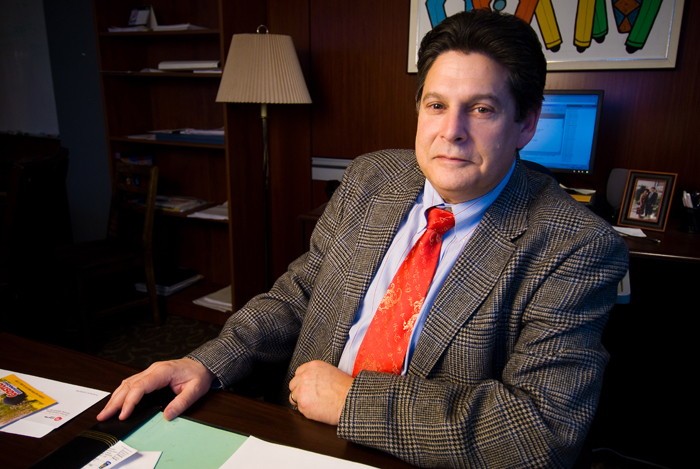U of W seeks students
Despite initial high enrolment rates, U of W concerned about last year’s drop
Even though the University of Winnipeg’s enrolment growth has outpaced the national average in the past, the university’s administration still thinks there’s room for improvement.
Statistics Canada recently reported the national enrolment growth rate for the 2006-2007 year was only 0.9 per cent.
In contrast, the U of W saw its enrolment rate increase by 4.2 per cent during the same period.
While university enrolment stagnated during the 1990s, rates have jumped up significantly since then.
But it went downhill in 2007-2008.
“We took a big hit last year,” said Neil Besner, associate vice president international for the U of W.
That year saw the university’s numbers drop 5.3 per cent.
“We are more dependant on revenue from tuition than other universities,” Besner said, citing funding as one of the reasons.
This year, enrolment increased by 2.1 per cent from last year’s low. But at 9,036, it is still less than the 2006-2007 numbers.
Besner said the key to raising enrolment is improving student services. He pointed to a redesigned website and improvements in advising and admissions, which he hopes will make a difference.
“We’re not perfect, but we’re improving,” he said.
“ We are more dependant on revenue from tuition than other universities.
Neil Besner, U of W
In addition, Besner pointed to the U of W’s expansion projects as only helping enrolment.
Besner said it will be the first time in 50 years that the university will have new science labs.
“We’ll have one of the best science buildings in the country,” he said.
The faculty of science, which has seen its enrolment wane over the last couple of years, saw its 2008-2009 numbers jump 43.9 per cent from last year.
Rod Hanley, the dean of science at the U of W, thinks the new science building will be a factor in attracting students.
“At the career fair, we had a fair number of students asking about [the new building],” Hanley said.
He said the faculty tries to respond to demographic trends, pointing to a decline in the humanities.
“Kids want to be immediately employable upon graduation,” he said. “I think that helps us in the sciences.”
John Danakas, public affairs director for the University of Manitoba, said it’s tougher to meet enrolment numbers today.
He said the University of Manitoba also experienced a decrease in enrolment this year, mainly due to demographics. Total enrolment was down 0.6 per cent for the winter 2009 term, dropping from 25,518 in 2008 to 25,364.
“Fewer students are graduating, so there are less people in that age group,” he said.
“Traditionally, Manitoba students have stayed in the province to go to university.”
Furthermore, the pool of available international students may be drying up. Danakas said China increased investment in its post-secondary infrastructure, which has led to less international students here.
Besner disagreed, pointing to a stronger Chinese economy as a reason for students to leave.
“It would still be cheaper for them to come to North America to go school,” Besner said.
Published in Volume 63, Number 25 of The Uniter (March 26, 2009)








